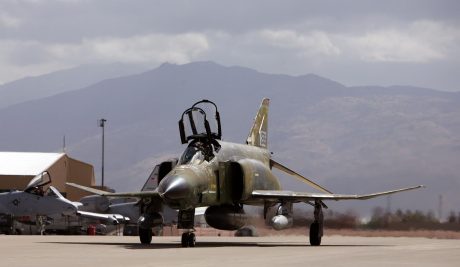
The aircraft is the first of 18 that will be assigned to Fleet Logistics Multi-Mission Squadron 30 (VRM-30) at Naval Air Station North Island.
The first operational CMV-22B Osprey configured for the Carrier Onboard Delivery (COD) role has been delivered to the U.S. Navy on June 22, 2020. The aircraft, registration #169437, is assigned to Fleet Logistics Multi-Mission Squadron 30 (VRM-30) “Titans” at Naval Air Station North Island. The Titans are the first CMV-22B squadron that was stood up in December 2018, a year before the first flight of the “CODsprey” (as some nicknamed the new aircraft), and they will receive 18 aircraft in total.
“The arrival of this extremely capable aircraft is exciting, especially for the Sailors of VRM-30 who have been working so hard for so long; this arrival takes it from a notional airplane to the real thing. They will have pride in ownership and know that their mission is to keep this aircraft airborne to support the fleet, so this is a great day for Naval Aviation,” said Capt. Dewon Chaney, Commodore of Fleet Logistics Multi-Mission Wing (COMVRMWING).
As you may already know, the CMV-22B is the specialized version of the Osprey developed from the MV-22 configuration to replace the aging C-2 Greyhound in the COD role to transport supplies from shore bases to aircraft carriers at sea. The aircraft will feature many improvements over the Greyhound, as described by the U.S. Navy in occasion of the delivery of the first test aircraft:
“The CMV-22B will be capable of transporting up to 6,000 pounds of cargo and/or personnel over a 1,150 nautical mile range. This expanded range is due to the addition of two new 60 gallon tanks installed in the wing for an additional 120 gallons of fuel and the forward sponson tanks were redesigned for additional capacity. The CMV-22B variant has a beyond line-of-sight high frequency radio, a public address system for passengers, and an improved lighting system for cargo loading. The aircraft will also be capable of internally transporting the F-35C Lightning II engine power module.”
The last feature mentioned, the capability to transport an F-35C Joint Strike Fighter’s Pratt & Whitney F135-PW-100 engine, was one of the key points that led to the choice of the Osprey for the COD mission, as it was too large to fit inside the C-2’s cargo bay. The CMV-22 is also reportedly quieter than the C-2, except during the transition from forward flight to hover and vice-versa.
The introduction of the tilt-rotor aircraft on aircraft carriers posed many challenges, with the U.S. Navy bringing together personnel from different backgrounds and teaming up with the U.S. Marine Corps to build up from zero everything that was needed to operate the Osprey in this new capability, as Commander Trevor Hermann, Commanding Officer of VRM-30 said: “We have brought folks from three different communities [the helicopter community, the COD community and the Marine Corps] along with their varied experience and expertise, together to form the VRM community. Our biggest challenge is to coalesce a team that has been spread across three bases and eight squadrons during this stand up. To be prepared and ready for operations we have leveraged the 20 years of Marine Corps experience with this aircraft and had our Sailors training with them, deploying with them and bringing their new knowledge back to the fleet. We have a group of very ordinary people accomplishing extraordinary things and I couldn’t be more proud.”
The Titans are currently planning to obtain the “Safe For Flight” certification in September 2020, while preparing for the first operational deployment aboard USS Carl Vinson next year to support the maiden deployment of the F-35C.
As a side note, Bell Boeing recently delivered the 400th V-22, reportedly a CV-22 for U.S. Air Force Special Operations Command. The entire V-22 fleet totaled more than 500,000 flight hours to date.



